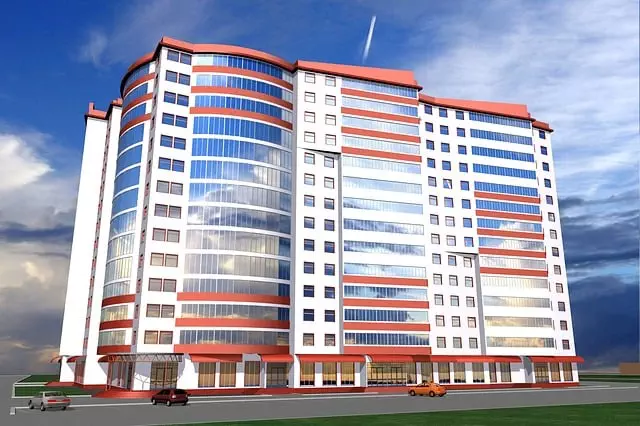Structural stem wall reinforcement is a critical component of residential foundation repair, addressing stability issues in homes built on unstable soils or facing extreme conditions. By strengthening vertical walls, this process counteracts problems like earth settlement, erosion, and seismic activity using materials like steel braces, mesh grids, high-strength concrete, and specialized coatings. It's essential for older homes and structures in disaster-prone areas, safeguarding against structural failures and preventing costly future repairs while ensuring a secure living environment. Regular maintenance and monitoring are crucial to maintain the integrity of residential foundation repair, enabling early detection of issues through inspections, debris removal, prompt leak fixes, and proper drainage.
“Structural stem wall reinforcement is a critical aspect of residential foundation repair, ensuring the longevity and stability of homes. This comprehensive guide delves into the essence of stem walls and their pivotal role in supporting residential structures. We explore common failure causes, highlighting the need for robust reinforcement techniques. From understanding various reinforcement materials to best practices for implementation, this article equips homeowners and professionals with essential knowledge for effective residential foundation repair. Learn how proper maintenance and monitoring post-reinforcement can safeguard your home.”
Understanding Structural Stem Wall Reinforcement

Structural stem wall reinforcement is a critical aspect of residential foundation repair, ensuring the longevity and stability of homes built on unstable soils or subject to extreme environmental conditions. It involves strengthening the vertical walls that support the structure’s load, which can become compromised over time due to various factors such as earth settlement, erosion, or seismic activity. By reinforcing these stem walls, engineers and builders can mitigate potential structural damage and create a more robust and secure living environment.
This process typically includes installing steel braces or mesh grids within the wall cavities, along with incorporating high-strength concrete and specialized coatings to enhance durability. Such reinforcement techniques are particularly vital for older homes or those in areas prone to natural disasters. Effective stem wall reinforcement not only protects residential properties but also prevents costly repairs and potential hazards associated with structural failure.
The Role of Stem Walls in Residential Foundation Repair

Stem walls play a critical role in residential foundation repair, acting as vertical supports that stabilize and strengthen the entire structural framework. In many homes, particularly those built on uneven terrain or in seismic-active zones, stem walls bear the brunt of external forces, preventing cracks from forming and ensuring the longevity of the foundation. They serve as a crucial line of defense against settling, shifting, and other forms of damage that can compromise the integrity of a home’s structure.
By reinforcing stem walls, homeowners and builders can significantly enhance the overall durability and resilience of residential properties. This involves incorporating advanced materials and techniques to mitigate risks associated with soil movement, hydrostatic pressure, and other environmental factors. Such reinforcement measures not only guard against costly repairs in the future but also contribute to maintaining the aesthetic appeal and market value of homes over time, making them a key consideration in any comprehensive Residential Foundation Repair strategy.
Common Causes of Stem Wall Failure

Stem wall failures in residential structures are a common concern for foundation repair specialists. Understanding the root causes is essential to prevent these issues. One of the primary reasons for stem wall failure is poor initial construction, including inadequate reinforcement or incorrect spacing of steel bars during the building process. Over time, this can lead to structural weakness and instability.
Another significant factor contributing to stem wall failures is soil conditions. Unstable soil, such as expansive clay, can cause movement and stress on the walls, leading to cracks and eventual collapse. Environmental factors like excessive moisture intrusion through defects in the masonry or improper drainage systems further exacerbate these problems, making residential foundation repair a necessary step to mitigate potential hazards.
Types of Reinforcement Techniques for Stem Walls

In the realm of residential foundation repair, stem wall reinforcement is a critical aspect for ensuring structural integrity and longevity. There are several techniques employed to fortify these essential walls. One common approach involves the use of steel reinforcing bars (rebar), which are strategically placed within the concrete stem walls during construction or subsequent repairs. Rebar provides additional strength by resisting tension and preventing cracks from developing and expanding.
Another effective method is the integration of fiber-reinforced composite materials. These modern solutions offer exceptional durability and flexibility, making them ideal for both new construction and remedial works. Fiberglass, carbon fiber, or polypropylene matrices infused with resin can be molded into various shapes and sizes to enhance stem wall strength without adding significant weight. This technique is particularly advantageous in areas prone to seismic activity or high wind loads, contributing to a more robust and resilient residential foundation repair solution.
Selecting the Right Materials for Reinforcement

When it comes to structural stem wall reinforcement for residential foundation repair, choosing the right materials is paramount. The ideal reinforcement should be strong, durable, and compatible with existing construction. Steel, often a preferred choice, offers exceptional strength-to-weight ratio and resistance to corrosion, making it suitable for both commercial and residential applications. However, in some cases, high-strength concrete or fibre-reinforced polymers can also be effective, depending on the specific structural needs and environmental conditions.
Factors like load capacity, span length, and potential seismic activity must guide material selection. For instance, steel rods or mesh are commonly used for short spans and general reinforcement, while larger projects or areas prone to seismic activity might require more robust solutions like pre-stressed concrete or advanced composite materials. Properly selected and installed reinforcements significantly enhance the structural integrity of stem walls, ensuring the longevity and stability of residential foundations.
Implementation and Best Practices for Effective Reinforcement

When implementing structural stem wall reinforcement for residential foundation repair, it’s crucial to adhere to best practices for effective results. This involves assessing the current state of the structure and identifying specific areas that require reinforcement. Professionals should use high-quality materials such as steel rods, cables, or plates, ensuring they are properly anchored into the existing walls and foundation to provide robust support. The method of reinforcement should be tailored to the type of damage, whether it’s due to settlement, seismic activity, or other environmental factors. Regular inspection is key; periodic assessments help monitor the condition of the structure and ensure the reinforcement remains effective over time.
Proper installation techniques are essential for long-lasting reinforcement. This includes ensuring all connections between components are secure and sealed to prevent water intrusion and further damage. Additionally, following local building codes and regulations is vital to guarantee structural integrity and safety. By combining these best practices with advanced techniques, residential foundation repair can be successfully addressed, preserving the stability and longevity of homes.
Long-Term Maintenance and Monitoring After Reinforcement

After reinforcing structural stem walls, proper long-term maintenance and monitoring are crucial for ensuring the integrity of residential foundation repair. Regular inspections are essential to identify any signs of shifting or damage, as these can indicate ongoing issues that may require further intervention. Homeowners should be vigilant in observing cracks, uneven floors, and any unusual noises coming from the walls.
A comprehensive maintenance plan includes keeping the area around the stem walls clear of debris and vegetation, which can compromise stability. Moisture control is also vital; addressing leaks promptly and ensuring proper drainage can prevent water damage that may weaken reinforced structures over time. Regular monitoring allows for early detection of potential problems, enabling proactive measures to maintain the stability and longevity of the foundation repair.
